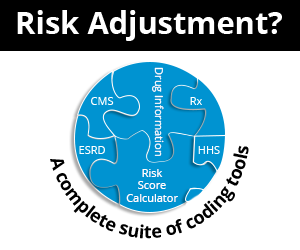
Modifier 33 and Modifier PT
April 8th, 2013 - Codapedia EditorIn 2011, both CPT® and CMS developed a new modifier in response to provisions of the Affordable Care Act (ACA) passed in 2010. The modifier was developed late enough in 2010 that it wasn’t included in the 2011 CPT® book, although it was a valid modifier for that year. The ACA mandated that any service that received an A or B rating from the US Preventive Services Task Force (USPSTF) be paid without co-pay or deductible for Medicare patients. Also, any group insurance plans that renewed or started after September 2010 that did not claim “grandfathered” status must also include first dollar coverage for services which the USPTF graded as A or B. According to the AMA document on modifier 33, when providing these A or B rated services are “part of an office visit, the office visit may not have cost-sharing if the primary reason for the visit is to receive preventive services.”
The USPSTF is a function of the Department of Health and Human Services. According to their statement, “The USPSTF conducts scientific evidence reviews of a broad range of clinical preventive health care services (such as screening, counseling, and preventive medications) and develops recommendations for primary care clinicians and health systems. These recommendations are published in the form of "Recommendation Statements."” The USPSTF reviews scientific literature and then makes recommendations for screening services. You can find a list of their current recommendations on their website at
http://www.uspreventiveservicestaskforce.org/uspstf/uspsabrecs.htm
Modifier 33, Preventive Service: When the primary purpose of the service is the delivery of an evidenced-based service in accordance with a US Preventive Services Task Force A or B rating in effect and other preventive services identified in preventive services mandates (legislative or regulatory), the service may be identified by appending modifier 33, Preventive Services, to the service. For separately reported services specifically identified as preventive, the modifier should not be used.
Use modifier 33 on the preventive medicine service/office visit and on any of the screening tests identified on the list from the USPSTF. This tells the payer that these are preventive services, and should prevent the payer from assessing a co-pay or deductible. The patient will have full coverage. Use a diagnosis code for the examination, such as V70.0, V20.2, or V72.31.
Practices should still verify coverage and benefits prior to the visit.
Modifier PT is a HCPCS modifier intended to be used when a scheduled colorectal screening test becomes a therapeutic or diagnostic service. Why would this be needed? Because a screening test has first dollar coverage and a therapeutic or diagnostic test will be subject to co-pay or deductible. Medicare instructs medical practices to use HCPCS codes for colorectal screening (for example, G0105, among others.) But if an abnormality is found and a biopsy is taken or a polyp removed, the surgeon uses a CPT® code in the family of codes starting with 37…. In that case, use the CPT® code, append modifier PT to the service and the patient will not be charged a co-pay or deductible. CMS’s quick reference guide to preventive services states, “No deductible for all surgical procedures (CPT® code range of 10000 to 69999) furnished on the same date and in the same encounter as a colonoscopy, flexible sigmoidoscopy, or barium enema that were initiated as colorectal cancer screening services. Modifier PT should be appended to at least one CPT® code in the surgical range of 10000 to 69999 on a claim for services furnished in this scenario.
###
Questions, comments?
If you have questions or comments about this article please contact us. Comments that provide additional related information may be added here by our Editors.
Latest articles: (any category)
Artificial Intelligence in Healthcare - A Medical Coder's PerspectiveDecember 26th, 2023 - Aimee Wilcox
December 22nd, 2023 - Find-A-Code
December 19th, 2023 - Aimee Wilcox
December 12th, 2023 - Aimee Wilcox
November 14th, 2023 - Aimee Wilcox
October 26th, 2023 - Wyn Staheli
October 11th, 2023 - Wyn Staheli
